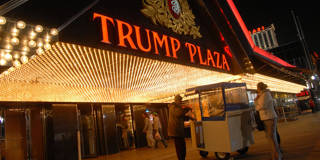
Trump and the Risk of a US Debt Default
There is good reason to worry that if Donald Trump is elected this November, he will exhibit all the recklessness and risky behavior that has characterized past second-term US presidents. The most urgent and obvious issue to watch would be US debt, given Trump's well-known propensity for declaring bankruptcy.
NEW YORK – Donald Trump knows a thing or two about defaulting on debt. His businesses have filed for reorganization under Chapter 11 of the US Bankruptcy Code at least four times to overcome excessive indebtedness – first with Trump Taj Mahal in 1991, then Trump Plaza Hotel in 1992, Trump Hotels and Casino Resorts 12 years later, and Trump Entertainment Resorts in 2009.